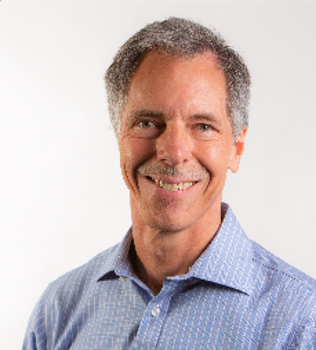Upgrade 2021: CIS LAB Speakers
September 20, 2021 // Upgrade 2021: CIS LAB Speakers
Demonstrating the Promise of Bio-Digital Twin Technology for More Effective Patient Treatments
Jon Peterson, VP of Strategy, NTT Research Senior Research Scientist, Medical & Health Informatics (MEI) Lab, NTT Research
Summary
As work on bio-digital twin technology continues at NTT Research, Dr. Jon Peterson presented a demonstration at Upgrade 2021 that showed the promise of the technology in a hospital setting. In a nutshell, in a matter of seconds it would enable physicians to run through various scenarios, involving both drugs and other treatment options, to quickly zero in on the best option for each patient.
Bio-digital twin technology involves replicating the human body in software, creating models that enable doctors to perform various what-if scenarios to test drugs and therapies and see how the “patient” reacts. Because the patient is a software model, there’s no risk of doing harm. Plus, the technology enables doctors to test therapies far more quickly vs. actually giving a patient a drug, for example, then waiting to see if it has the desired effect.
Dr. Peterson, a Senior Research Scientist at NTT Research, demonstrated how the technology works using a model dubbed Otto, after the German doctor and physiologist Otto Frank, who was researching and publishing in the cardiology field more than 100 years ago. “We’re standing on the shoulders of giants in this,” Dr. Peterson said.
Otto, implemented in Simulink with a MATLAB front end, models the cardiovascular system, which is the initial focus of NTT Research’s bio-digital twin work. For the demonstration, he used a model with a generic set of parameters to show how it represents various parts of the cardiovascular system. The model demonstrated how blood flows through the system, how oxygen is extracted, and the various pressure changes that occur with each heartbeat.
But that’s just a step toward the ultimate goal. “We want to sculpt this model to define these parameters in such a way that they represent you or me in the context of what’s happening in your cardiovascular system,” Dr. Peterson said.
In collaboration with the National Cerebral and Cardiovascular Institute in Japan, NTT Research is working to define parameter spaces and ranges, and to look at interactions among them all. Ultimately, the idea is to come up with a multi-dimensional “hypercube” that contains all of the parameters necessary to model a specific person.
At that point, when a patient goes to the hospital with a cardiac issue such as a heart attack, a physician could use the model to assess the effectiveness of various treatments, such as a single drug or a combination of drugs. The model uses a statistical technique called Bayesian Inference to quickly arrive at the best likely course of treatment.
“This allows you to examine a range of options and make sure that you’ve covered all your bases. So there’s no outlier out here that you hadn’t considered,” Dr. Peterson said.
The system can also determine if no pharmacological treatment will be effective, enabling the doctor to pivot to alternative therapies such as a device – without endangering the patient or wasting time testing drugs that ultimately don’t deliver the desired result.
Eventually, the goal is to develop more advanced sensors and be able to monitor and control chronic conditions, not just acute. “Then we can finally make it to predicting before something happens,” Dr. Peterson said.
Click below for the full transcript.

Jon Peterson
VP of Strategy, NTT Research Senior Research Scientist, Medical & Health Informatics (MEI) Lab, NTT Research
Jon Peterson explores the application of engineering principles to medical challenges. After obtaining a degree in electrical engineering from Cornell University, he studied the molecular mechanisms underlying cardiac relaxation at Johns Hopkins University School of Medicine, receiving a Ph.D. in biomedical engineering. During postdoctoral and faculty appointments at the University of Vermont, he delved into molecular energetics in the normal and diseased heart. Upon joining a small consulting group, he worked on biomedical projects ranging from the detection and classification of atrial fibrillation to a teleoperated surgical robotics system. For the past 15 years, Dr. Peterson’s work has focused on implanted sensors, systems and simulations for diagnosis of cardiac rhythm disorders and heart failure.
MORE videos from NTT's upgrade summit, september 2021
- Jon Peterson: Bio Digital Twins in Health and Disease
- Bernhard Wolfrum: Transformable 3D Neuroelectronic Interfaces
- David Gracias: Smart Microtechnologies for Human Interfaces
- Kenji Sunagawa: Technologies Focusing on Unmet Needs are Vital to the Sustainable Future of Medicine
- Cory Funk: Finding the Needles in the Haystack: Utilizing a Causal Framework to Reduce the Hypothesis Space and Relate the Genome to Phenomes
- Daniel Burkhoff: Development and Validation of a Hemodynamic Digital Twin for Intensive Care Decision Support

